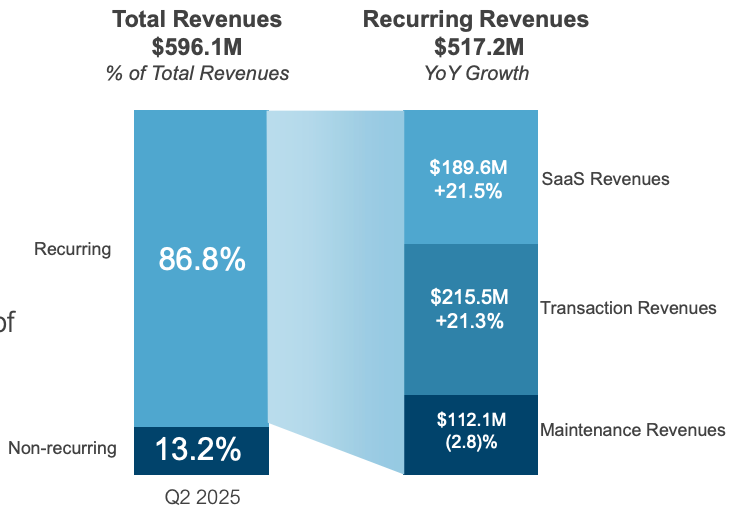In today’s increasingly digital world, even governments need software to run day-to-day operations smoothly.
We may not be familiar with the company, but Tyler is the No. 1 software provider for US state and local governments. It supports a wide range of critical government functions—finance/ERP, tax and appraisal, courts and justice, public safety/911, permitting and licensing, and citizen-facing portals for payments and services. It’s essentially the operating system (OS) for government agencies, embedded deeply into workflows.
How Tyler Makes Money
Tyler is primarily a SaaS business, and a large part of its revenue (86.8%) comes from recurring subscriptions. In Q2 2025, SaaS contributed 32% of total revenue, growing impressively by 21.5% year-on-year.
There’s also a legacy segment—Maintenance—which accounts for about 19% of revenue, representing recurring fees from older, on-premise systems. This segment has seen lower revenues as more government agencies move to the cloud.
But the most interesting piece? Transaction revenue, which made up 36% of total revenue in Q2 2025. This now represents the largest single contributor to the business.



